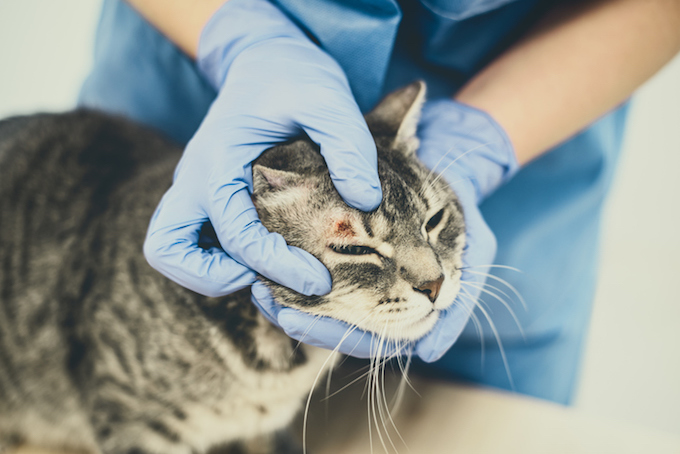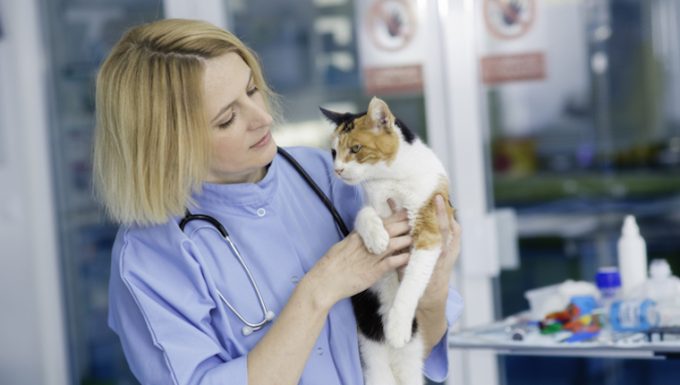Eosinophilic granuloma complex in cats refers to a group of three separate skin issues. The condition mainly causes lesions.
Technically, the three issues are called indolent ulcers, eosinophilic plaque, and eosinophilic granuloma.
Generally, all cats and breeds can develop the condition. Although female cats seem to develop the condition more than male cats.
If you see the signs of the condition in your cat, then get to a veterinarian for a proper diagnosis and treatment.
Here’s what you should know about the symptoms, causes, and treatments for the condition.
Symptoms of Eosinophilic Granuloma Complex in Cats
The condition produces a wide range of symptoms. For instance, some of the most common symptoms include:
- Lesions
- Enlarged lymph nodes
- Loss of hair
- Skin turning red
- Pain
- Swollen footpads
- Mouth ulcers
Generally, the lesions appear on the lips most often.
Causes of Eosinophilic Granuloma Complex in Cats

The cause of the condition is technically unknown. Although lots of factors are suspected to play a part in causing it. For example, some of those factors include:
- Allergic reactions
- Insects and fleas
- Genetics
- Food allergies
Also, female cats seem to develop the condition more often than male cats.
Treatments for Eosinophilic Granuloma Complex in Cats
Firstly, your vet will ask about your cat’s symptoms. Secondly, your vet will ask about your cat’s full medical history.
Thirdly, a full physical examination will be carried out. Blood and urine tests will be taken. Additionally, skin scrapings of any affected areas will be taken and analyzed.
Generally, treatment begins with looking for any food allergies. Your vet will formulate a safe diet for your cat. Although be patient, as this process can take a number of weeks to complete.
Additionally, anti-inflammatory medication will be prescribed. As always, if your vet prescribes your cat any medicine, make sure to stick to the correct dose and frequency instructions. Also, complete the full course of medicine.
Finally, it’s vital to remember to schedule frequent follow up visits with your vet. This is to monitor the success of any diet changes.
Have you ever cared for a cat who suffered from this condition? How did your vet help your cat recover? Let us know in the comments section below.









